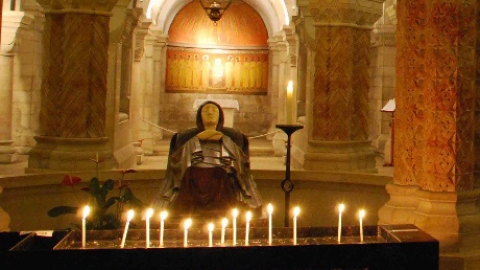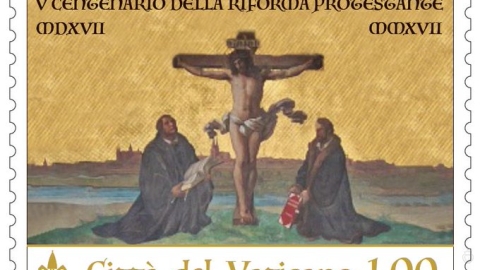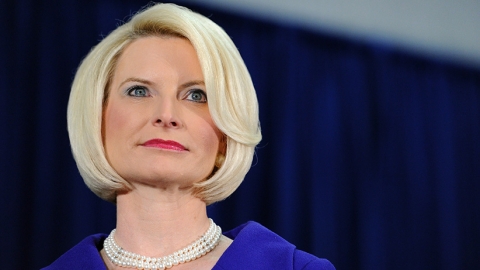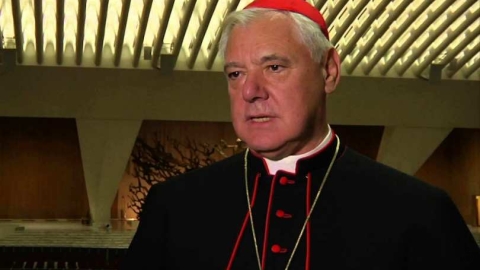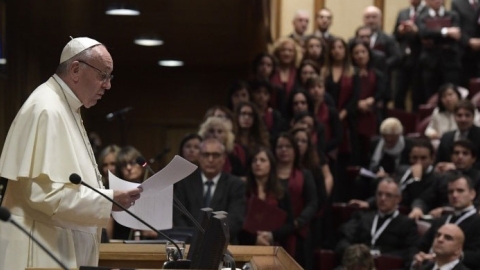Devotion to the Immaculate Heart of Mary

Written by Father Michel Simoulin, originally appearing in Le Seignadou (Sign of God), newsletter of the priory in Montreal de l'Aude, France.
Fr. Michel Simoulin was former rector at the Econe seminary from 1988 to 1997, and is chaplain of the Dominicans Teaching Sisters of Fanjeaux, currently stationed at the SSPX priory of Montreal de l'Aude, France.
“Fatima will be for devotion to the Immaculate Heart of Mary what Paray-le-Monial was for devotion to the Sacred Heart of Jesus. Fatima, in a certain way, is the continuation, or rather, the conclusion of Paray-le-Monial: Fatima combines these two Hearts that God Himself united in the divine work of Redemption.” – Cardinal Cerejeira, Patriarch of Lisbon, May 30, 1948
Development of Devotion
We must first agree on what the word “heart” means. The Bible talks about the heart to express the innermost place in a man, the seat of his interior being: his feelings, his urges and his desires, but also his memory, will and intellect: one knows well only with the heart. The heart is the entire person, his “secret garden” that no one knows except God alone. What God seeks is the heart: this is why the heart is the place where God allows Himself to be found, since God dwells in the human heart. Thus to speak about the Heart of Jesus is obviously not to discuss His cardiac health. Nevertheless, it certainly is a way of penetrating into the mystery of the God who takes flesh, becomes man without thereby ceasing to be God. It is the same with the Heart of Mary, which has become the instrument of the Holy Spirit living in her.
It should be remarked first of all that Divine Providence has always made sure that devotion to Jesus Christ, the Virgin Mary, and the Church advance at the same pace. After the major dogmatic definitions of the first four centuries, the devotion of the saints—of spiritual men and women and of theologians—was then directed in turn toward Jesus or toward Mary, toward the Heart of Jesus or toward the Heart of Mary; and it may be useful in this Fatima year to study the development of this devotion to the Immaculate Heart of Mary that Jesus “wants to establish in the world.”
The Immaculate Conception and the Sacred Heart
Thus we can observe that, as far as the Immaculate Conception is concerned, after winning the devotion of the faithful, the Virgin Mary waited for the Church to speak, and Pope Pius IX defined the dogma in 1854. Our Lady came to Lourdes four years later to confirm her privilege, but also to confirm the authority of the Supreme Pontiff. The turbulent times required this confirmation: the Pope had examined the matter fairly and decided correctly.
As for the Sacred Heart, the Church’s devotion took the lead until St. John Eudes who, in 1672, ordered that the Mass of the Sacred Heart be celebrated in his communities. And it was during a private apparition of the Sacred Heart to St. Margaret Mary Alacoque in June 1675 that Christ asked her for the institution of the Feast of the Sacred Heart: “I ask you that the first Friday after the Octave of Corpus Christi be dedicated to a special feast day to honor My Heart.” And on February 6, 1765, Pope Clement XIII officially instituted the Feast of the Sacred Heart. A special Mass and an Office were approved by the Holy See on May 11 of the same year. It was then instituted on July 17, 1765, in all the dioceses in France. On August 23, 1856, Pope Pius IX, at the request of the French bishops, extended the Feast of the Sacred Heart to the whole Catholic Church. He thus included it on the universal liturgical calendar. The order that was followed in this case was different, therefore: the devotion of the faithful, the Sacred Heart Himself, and the authority of the Church.
Devotion to the Immacualate Heart of Mary
It was the same with the Immaculate Heart of Mary. The devotion developed until Saint John Eudes who, from 1648 on, was able to celebrate the Mass of the Sacred Heart of Mary in the cathedral in Autun. The term “Immaculate” was not yet used, and Saint John Eudes notes:
Divine Providence wanted to have the feast of the Mother go before the feast of the Heart of Jesus, so as to prepare the way for veneration of His adorable Heart in the hearts of the faithful.” And he noted also that “it is not right to separate two things that God joined so closely by the strongest bonds and by the closest ties of nature, of grace and of glory: I mean the divine Heart of Jesus, the only Son of Mary, and the virginal Heart of Mary, the Mother of Jesus....These two Hearts of Jesus and Mary are united so intimately that the Heart of Jesus is the principle of Mary’s Heart, as the Creator is the principle of the creature; and the Heart of Mary is the origin of the Heart of Jesus, as a mother is the origin of her child’s heart. A wondrous thing!”
But it was necessary to wait until 1917, at the conclusion of a long development of the devotion, for the Virgin herself to come to tell the world that “Jesus ... wants to establish in the world the devotion to my Immaculate Heart.” And it would be up to the Church to conclude this development with the inauguration of the Feast of the Immaculate Heart of Mary by Pope Pius XII on May 4, 1944.
Thus Cardinal Cerejeira commented in an address for the fiftieth anniversary of the apparitions:
In Lourdes, in 1954, I took the occasion that was offered to me to compare Lourdes with Fatima. To me, Lourdes seemed to be a response of the Blessed Virgin to the rationalism of the 19th century; that was where Our Lady appeared as the Immaculate Conception, which His Holiness Pius IX proclaimed a dogma of the Church, confirming the Catholic faith, the infallibility of the Pope, the defeat of sin, and the triumph of grace.
For its part, Fatima seemed to me like a merciful reply of Our Lady to the atheism of the 20th century. Can I tell the whole truth? Fatima arises in our anxious world like a beacon of hope against atheistic Communism that claims to conquer the whole world and to destroy the Church.”
(“Fatima devant l’Église et le monde”, February 11, 1967. La documentation catholique 64)
